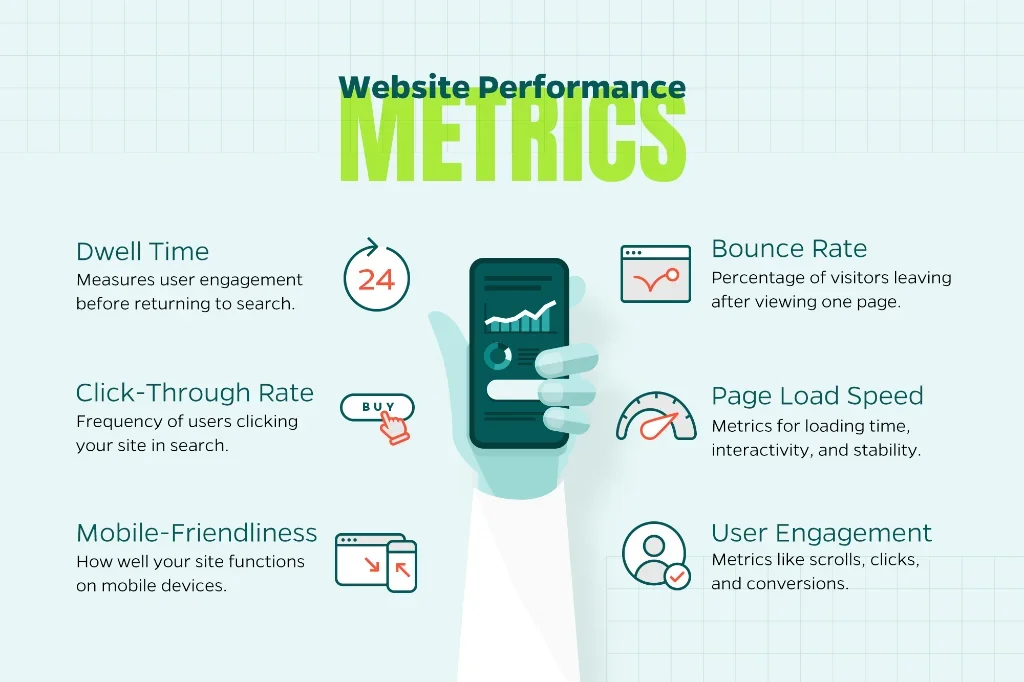Let’s say a potential customer lands on your website, ready to make a purchase. But instead of clear, helpful guidance, they’re met with confusing button labels, vague error messages, and navigation that feels like solving a puzzle. Frustrated, they hit the back button within seconds. Not only have you lost a conversion—you’ve also sent a negative signal straight to Google’s algorithm.
This scenario plays out millions of times daily across the web. It highlights a crucial truth that many marketers overlook: the words that guide users through your site—what we call UX writing—have a direct impact on your search engine rankings. While most SEO conversations focus on keywords and backlinks, the microcopy that shapes user experience is quietly influencing the behavioral signals that search engines use to determine your site’s value.
In this post, we’ll explore the often-underestimated connection between the words on your interface and your SEO success. This can give you actionable insights to improve both user experience and search visibility.
What Exactly is UX Writing?
Unlike the long-form content you might write for blog posts or product descriptions, UX writing focuses on the microcopy—the short, snappy text that helps users navigate and interact with your website or app.
Here are a few examples:
- Error messages like “Oops, something went wrong—try again?”
- Button labels such as “Sign Up Now” or “Learn More.”
- Tooltips, form field instructions, or confirmation pop-ups.
These elements aren’t just filler; they’re the voice of your site, making sure users feel guided, not exasperated.
Good UX writing is clear, concise, and user centered. It anticipates questions, reduces confusion, and encourages action. When users have a smoother experience, they stick around longer, click more, and bounce less. All these things send positive signals to search engines like Google.
SEO Signals: A Quick Refresher
SEO signals are the data points Google uses to decide if your site deserves a top spot in search results. They’re not all direct (like keywords or backlinks), but many are behavioral. In other words, they are based on how real people interact with your pages.
Key metrics include:
- Dwell Time and Time on Page: How long users stay on your site before heading back to search results.
- Bounce Rate: The percentage of visitors who leave after viewing just one page.
- Click-Through Rate (CTR): How often people click your site in search results.
- Page Load Speed and Core Web Vitals: Metrics like loading time, interactivity, and visual stability.
- Mobile-Friendliness: How well your site works on phones and tablets.
- User Engagement Metrics: Things like scrolls, clicks, and conversions.

Google’s algorithm is smart. It prioritizes sites that deliver value and a great experience. So, if UX writing makes your site easier to use, it indirectly boosts these signals. Let’s explore how to improve your site’s UX writing and, consequently, its rankings.
The Direct Links Between UX Writing and SEO
1. Enhancing Clarity and Readability for Better Engagement
Imagine landing on a page where the headings are vague, the instructions confusing, and the calls to action (CTAs) buried in jargon. You’d probably click away fast, right? That’s a high bounce rate in action, and it tells Google your content isn’t resonating.
UX writing flips this by making everything crystal clear. For example, instead of a button saying “Submit,” try “Get Your Free Quote.” It’s specific, benefit-oriented, and conversational. This kind of writing keeps users engaged, increasing dwell time and signaling to Google that your page is valuable.
Plus, with voice search on the rise (thanks to Siri, Alexa, and Google Assistant), natural-language UX writing aligns with how people speak. Queries like “How do I reset my password?” match seamless UX copy, improving CTR from voice results.
2. Streamlining Navigation to Reduce Bounce Rates
Poor navigation is a silent killer for SEO. If users can’t find what they need quickly, they bounce—and Google notices.
UX writing shines here by crafting intuitive labels for menus, links, and search bars. Think “Shop Men’s Clothing” instead of just “Men.” Or error messages that don’t dead-end: “No results found? Try searching for ‘blue sneakers’ or browse our categories below.”
This reduces frustration, encourages deeper exploration, and lowers bounce rates. Lower bounces mean higher rankings, as Google interprets it as “this site satisfies user intent.”
3. Boosting Accessibility and Inclusivity
Google loves accessible sites. That’s even a ranking factor in their guidelines. UX writing plays a big part by ensuring text is inclusive: using simple language, alt text for images, and ARIA labels for screen readers. Better accessibility leads to broader user satisfaction, which translates to positive SEO signals like more shares, backlinks, and repeat visits.
4. Optimizing for Mobile and Speed
Mobile users are impatient. Google’s Mobile-First Indexing means your site better perform well on small screens. UX writing helps by keeping copy concise: shorter sentences, bullet points, and scannable text reduce cognitive load and improve load times indirectly (fewer words mean lighter pages).
Core Web Vitals, which measure user-centric performance, benefit too. Clear UX writing prevents users from rage-clicking or abandoning due to confusion, keeping interactivity scores high.
5. Influencing Behavioral Signals Through Persuasion
UX writing isn’t just informative; it’s persuasive. A well-crafted CTA like “Start Your Free Trial Today—No Credit Card Needed” can skyrocket conversions. Higher engagement (clicks, form fills) signals relevance to Google, potentially improving your position in search results.
And don’t forget about E-E-A-T (Experience, Expertise, Authoritativeness, Trustworthiness). It is now part of Google’s quality rater guidelines. Trustworthy UX writing, like transparent privacy notices or honest error handling, builds user trust, leading to better reviews and social proof that bolster SEO.
The Bottom Line: UX Writing as Your Secret SEO Weapon
UX writing isn’t just an extraneous, “nice-to-have benefit.” It’s a strategic advantage that influences key SEO signals by putting user satisfaction first. In today’s search landscape, where Google increasingly rewards genuine value over optimization tricks, the intersection of thoughtful UX copy and solid SEO strategy represents untapped potential for many businesses. The beauty of UX writing lies in its dual impact: every word that improves the user experience simultaneously works toward better search performance.
Ready to unlock this potential for your site? At Straight North, we specialize in creating digital marketing strategies that blend exceptional user experience with robust SEO performance. Whether you’re looking to audit your current UX writing or develop a comprehensive strategy that bridges user experience and search optimization, we’re here to help you climb the rankings while building genuine connections with your audience. Interested? Contact Straight North today.








